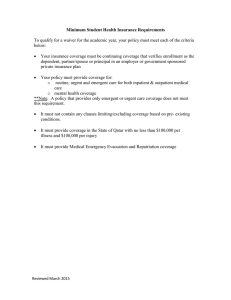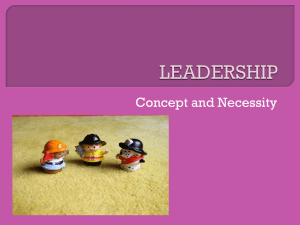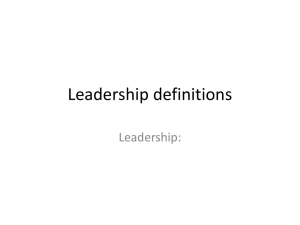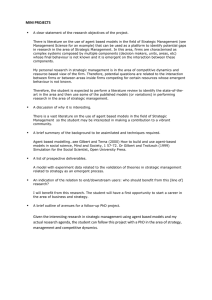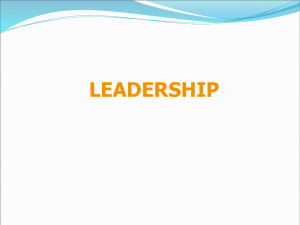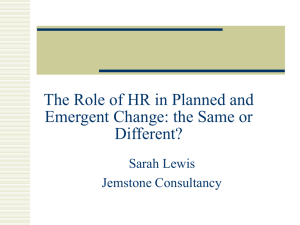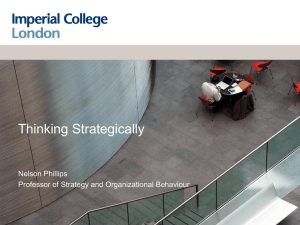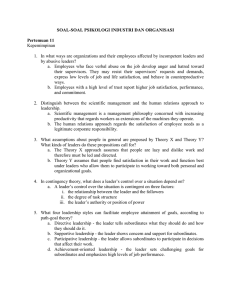Leadership Defined
advertisement
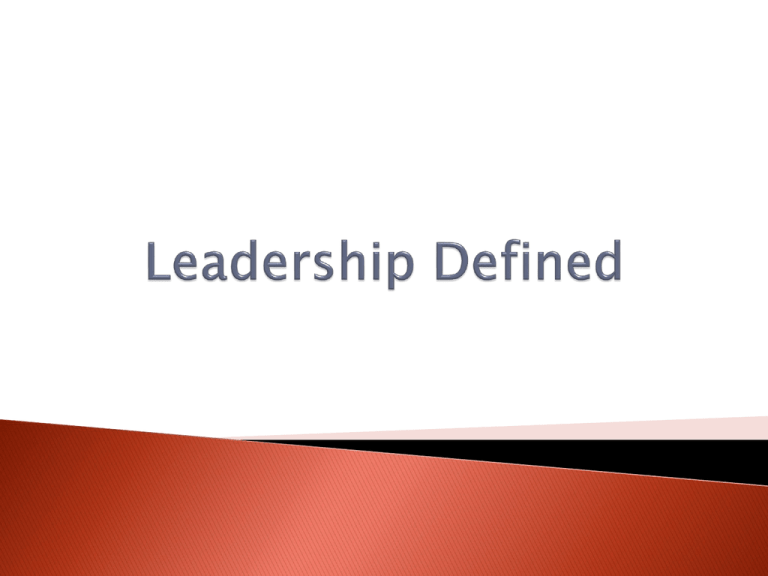
In the past 60 years, there has been as much as 65 different classification systems to define the dimensions of leadership (Fleishman et al., 1991). Leadership as the focus of group processes The leader is at the centre of group change and activity and embodies the will of the people Personality Perspective Leadership is a combination of special traits or characteristics that individuals possess. The traits enable them to induce others to accomplish tasks An act or behavior The things leaders do to bring about change in a group Leadership as a transformational process Leaders move followers to accomplish more than what is usually expected of them Power relationship Leaders have power and wield it to effect change in others Skills perspective Stresses the capabilities (knowledge and skills) that make effective leadership possible Leadership is a process: Process implies that a leader affects and is affected by followers. Leadership is not a linear but rather an interactive event. Leadership involves influence: Influence is the sine qua non of leadership. Without influence, leadership does not exist. Leadership occurs in a group context: Leadership takes place in a group and involves the process of influencing individuals in the group who have a common purpose. Leadership involves goal attainment: Leadership involves goal attainment: Leadership includes attention to goals. Leadership directs a group of individuals towards accomplishing some task/goal. Leaders direct their energies towards individuals who are trying to achieve something together. A process whereby an individual influences a group of individuals to achieve a common goal. Trait: Certain individuals have special innate or inborn characteristics or qualities that make them leaders. It is the qualities that differentiate them from nonleaders. Some of the personal factors (eg.height), personality features (eg.extraversion), and ability characteristic (speech fluency). Trait: Conceptualizes leadership as a property or set of properties possessed in varying degrees by different people. Process: Leadership is a phenomenon that resides in the context and makes leadership available to everyone. That make leadership available to everyone, and it is something that can be learned. Assigned leadership: Based on occupying a position in an organization. Eg: directors, department heads etc. Emergent: When others perceive a person as the most influential member of a group or organization, regardless of the individual’s title. The emergent leader acquires leadership through other people in the organization who support and accept his/her behavior. Emergent: It emerges over a period of time through communication (being verbally involved, being informed, seeking other’s opinions, initiating new ideas, and being firm but not rigid. Leadership is part of the influence process. Power is the capacity or potential to influence. People have power when they have the ability to affect others’ beliefs, attitudes, and courses of action. Five bases of power: reward, coercive, legitimate, referent and expert. The use of force to effect change. Influencing others to do something by manipulating the penalties and rewards in their work environment. These leaders are interested in their own goals and seldom are interested in their subordinates’ wants and needs. LEADERSHIP PRODUCES CHANGE & MOVEMENT Establishing Direction o Create a vision o Clarify Big Picture o Set Strategies o Aligning People o Communicate goals o Seek commitment Build teams and coalition Motivating and Inspiring o Inspire and Energize o Empower Subordinates o Satisfy Unmet Needs Produces Order and Consistency Planning and Budgeting Organizing and Staffing Controlling and Problem Solving Question: Don’t leaders also do these? How is organization with strong management without leadership? How is organization with strong leadership but without management?

